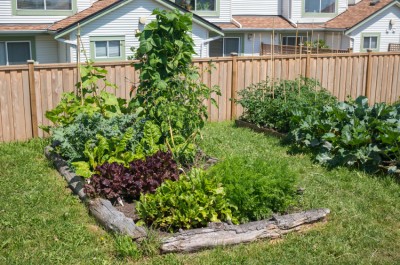My first attempt at gardening wasn’t cheap. In fact, it was pretty expensive. I was allured by all the bright and shiny gardening gadgets, potions, seeds and such at our local gardening store. I was sure I had to have one of everything.
“Don’t need all that stuff,” my father, a veteran gardener told me. Still, I didn’t listen. And, as much as it pains me to admit it, he was right.
Now, after nearly 15 years of gardening under my belt, I’ve learned a better way. Gardening doesn’t have to be expensive. Sure, there will always be some cost involved. It’s inevitable. But, gardening well can be done inexpensively and with very little special materials on hand.
In tough economic times, we really need to find ways to garden so that we actually save money, rather than putting added stress on family finances. Here are some tricks and tips and gardening lessons I’ve learned along the way.
Define ‘pretty’ — and get over perfection
For some people, having pretty and perfect flower beds is their ultimate goal in gardening. Beautiful beds of flowers, vegetable gardens that look like they came right out of a catalog. …
But for survival gardeners, or for those of us who simply want to feed our families, we need to garden on the cheap. The truth is, you don’t need beautiful raised beds. Sure, they are nice, but they are completely unnecessary.
Instead, I simply dig a patch of ground where I want to plant a bed, and then remove the grass and add in extra soil. If I want a border around my bed, I use what I have on hand. I have used rocks, bricks, and even limbs and sticks to create beautiful raised beds that look just as good as my neighbor’s expensive landscaper-created beds.
I’ve gotten over the need to have a perfect-looking garden. It has saved me many headaches and while I do still occasionally battle a case of the garden jealousies, overall I’m happy if my garden looks healthy and somewhat neat, clean and tidy. (You must pull weeds regularly, by the way, if you want neat, clean and tidy.)
Learn to start your own seed — and embrace heirlooms
One of the biggest money-saving tips in the garden comes from learning how to start your own plants from seed. When I evaluated my spending habits those first few years of gardening, I realized that I was spending a fortune in buying plants and transplants. I knew that plants came from seeds, but for some reason I was scared to try it myself. It seemed difficult and mysterious to me.
New Survival Seed Bank™ Lets You Plant A Full Acre Crisis Garden!
Truth is, you CAN start your own seeds at home with very little effort or cost, and there’s nothing mystical about it. It is just simple science … and economics. For the price of just a few transplants, you can buy enough seed to grow 50 to 100 plants! One year, I spent more than $40 on tomato plants. I could have spent a fraction of that on quality heirloom tomato seed … and I would have ended up with better, healthier plants, too.
Best of all, your efforts will be rewarded when you use only heirloom seed because you won’t have to buy packets of seed again. Heirlooms allow you to save seed from your own harvest, year after year. Talk about money in the bank!
To start seeds at home, all you need are some good quality seeds, some starter soil, and something to put your seeds in. (And don’t forget the water and sunlight.) Our family recycles everything from toilet paper rolls to yogurt cups for our seed starting “pots.”
Simplify your gardening maintenance routines
Expensive bloom boosters, sure-fire pest control potions … sometimes it’s hard to tell what’s really useful from total wastes of your time and money.
Don’t allow yourself to get caught up in all the hype. Instead, work on getting back to basics with your garden. Try these tricks before falling prey to some gardening snake oil salesman:
- Make your own compost. Homemade compost is one of the best amendments to your soil, hands down.
- Use a quality natural fertilizer, but don’t go overboard with it. Follow the instructions and fertilize your plants only when needed. Dumping fertilizer on your plants “just because” can actually do more harm than good.
- Practice natural pest control. You can pick off bugs by hand just as easily as you can douse your plants with some toxic potion. Try using diatomaceous earth, garlic and hot peppers as a natural pest repellant. Rotate crops to keep pests away.
- Install a rain barrel or two. You’ll save oodles of money on your water bill, if Mother Nature cooperates.
- Borrow or rent expensive gardening equipment, like tillers and post-hole diggers. Ask yourself how often you’ll really use something before you make a big purchase.
- Learn as much as you can about sustainable agriculture. Check out a book or two at the library and read up on cover crops and other things you can do to naturally restore health to your soil.
- Make your own mulch with leaves, straw and untreated grass clippings.
The long and short of it is this: Before running out to the store to buy another gardening gadget or item, think about what you have on hand at home, and try those things first. Knowledge is power. Educate yourself on back-to-basics gardening and you’ll spend far less money at the store. Your garden will reward you. It just takes time and patience. Don’t give up. Keep gardening and keep learning.
 Off The Grid News Better Ideas For Off The Grid Living
Off The Grid News Better Ideas For Off The Grid Living





